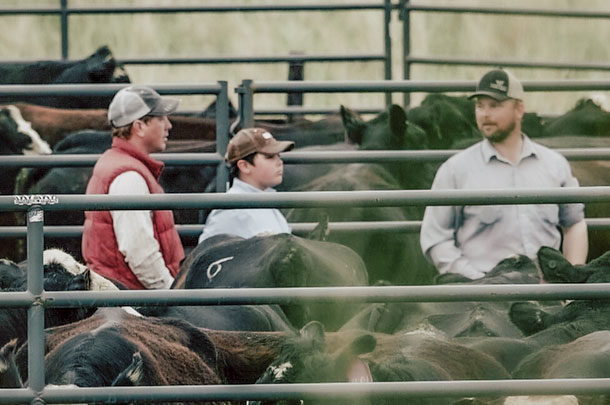For many producers, calving season is still top of mind, but before long, it will be time to make breeding decisions for the next calf crop. Making breeding decisions can be stressful, and the sheer amount of information can be overwhelming. You may be tempted to fall into the trap of selecting a bull because his picture appears near the front of the semen catalog or because you’ve heard talk about him at the local feed store or on your favorite social media discussion group. While all these forums can be great places for gathering information, it is important to remember, the bull that is popular or works best for your neighbor might not be the right bull for your operation.
When it comes to genetic selection, perhaps the most important thing to remember is to start with the end in mind. If you raise your own replacement females and sell your calves by the pound at weaning, your selection criteria should undoubtedly be different than someone who buys bred heifers and retains ownership on their calves. Once you’ve identified where you are going, selecting the tools that will help you get there becomes much easier.
The gold standard of tools
Expected progeny differences (EPDs) and indexes are considered the gold standard of tools available for genetic progress. EPDs are available for many individual performance, maternal and carcass traits. In the two scenarios mentioned above, the first should put additional emphasis on traits such as Calving Ease Maternal (CEM), Milk, Docility (DOC), Heifer Pregnancy (HPG) and Stayability (STAY); while the second would focus more on traits such as Yearling Weight (YW), Average Daily Gain (ADG), Carcass Weight (CW), Ribeye Area (REA) and Marbling (MARB).
When making breeding decisions with EPDs, it is important to consider the accuracy value of those EPDs. Young sires with genomically enhanced EPDs usually have accuracy values in the .30 to .40 range, while mature bulls with recorded progeny data have much higher accuracy values. The amount an individual EPD can change becomes smaller the closer its accuracy value gets to 1. Also helpful to consider is the percent rank of a sire’s EPDs or indexes. It is easy to get lost in the actual numbers, but knowing where a sire ranks in comparison to his contemporaries can help make your genetic decisions a little easier.
Indexes, on the other hand, combine multiple EPDs by assigning them an economic weighting based on a defined breeding strategy, and they give you one number associated with profitability for that strategy. For example, an operation that raises its own replacement females and sells its calves by the pound at weaning would probably choose to put more value on the Maternal Weaned Calf Value index ($M) than the Beef Value index ($B). This is because $M predicts the profitability differences in progeny due to genetics from conception to weaning and assumes a self-replacing herd model, while $B is a terminal index representing the average dollar-per-carcass difference in the postweaning performance and carcass value of a sire’s progeny.
When making your breeding decisions this spring, don’t let yourself get overwhelmed by the amount of information you are presented. Start with your end goal in mind and let that guide your decisions. Don’t be afraid to reach out to your A.I. industry professional, genetic provider or breed association representative. It is never a bad idea to have a team of trusted professionals in your corner. Ask them lots of questions and make sure they are aware of your goals. With the right people and the right end goal in mind, this breeding season can be a little less stressful.








